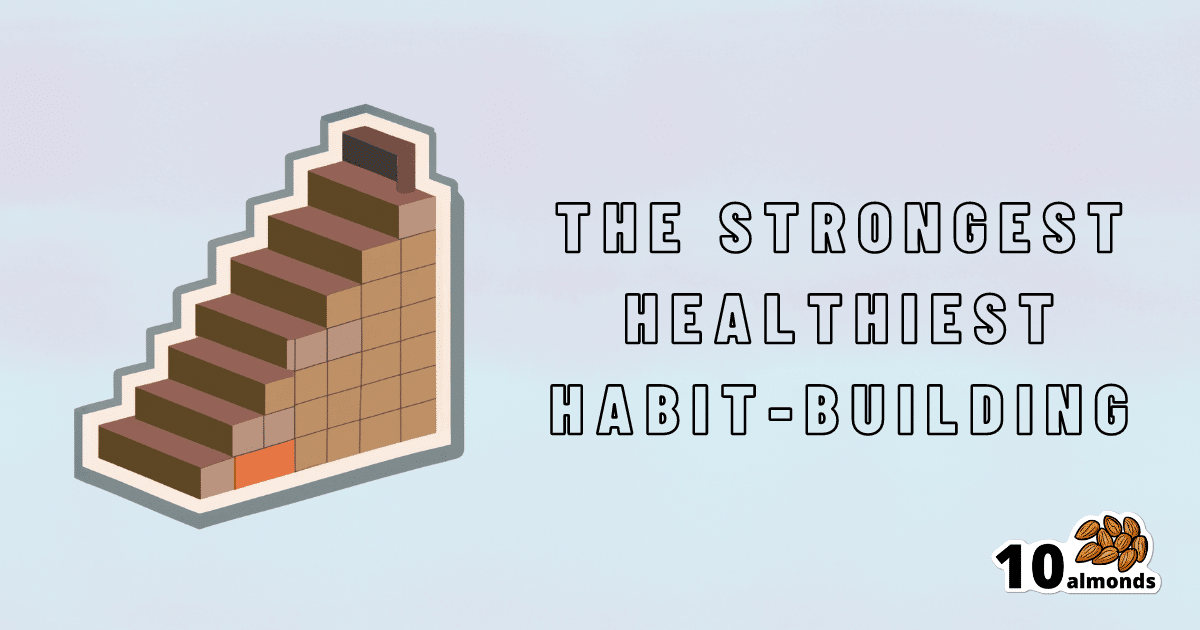How To *Really* Pick Up (And Keep!) Those Habits
Dr. Jen Gunter explains the difference between normal anxiety and an anxiety disorder in this informative video. Learn about your brain’s threat-detection system and effective treatment methods.

The Healthiest Habit-Building
Why was that book “Atomic Habits” called that? It wasn’t just because it’s a catchy title…
Habits are—much like atoms—things that are almost imperceptibly small, yet when stacked, they make up the substance of many much larger and more obvious things, and also contain an immense amount of potential power.
About that power…
Habits are the “compound interest” of natural human life. Every action we take, every decision we make, makes our life (often imperceptibly) better or worse. But getting even just 1% better or 1% worse at something every day? That’s going to not just add up over time… It’ll actively compound over time.
Habits will snowball one way or the other, good or bad. So, we want to control that snowball so that it works for us rather than against us.
Thus, we need to choose habits that are helpful to us, rather than those that are harmful to us. Top examples include:
- Making healthy food choices rather than unhealthy ones
- Moving our body regularly rather than being sedentary
- Having a good bedtime/morning routine rather than a daily chaotic blur
- Learning constantly rather than digging into old beliefs out of habit
- Forging healthy relationships rather than isolating ourselves
We all know that to make a habit stick, we need to practice it regularly, with opinions varying on how long it takes for something to become habit. Some say 21 days; some say 66. The number isn’t the important part!
What is important
You will never get to day 66, much less will you get to day 366, if you don’t first get to day 6 (New Year’s Resolutions, anyone?).
So in the early days especially, when the habit is most likely to get dropped, it’s critical to make the habit as easy as possible to form.
That means:
- The habit should be made as pleasant as possible
- (e.g. by making modifications to it if it’s not already intrinsically pleasant)
- The habit should take under 2 minutes to do at first
- (no matter if it takes longer than 2 minutes to be useful; it’ll never be useful if you don’t first get it to stick, so make your initial commitment only 2 minutes, just to get in the habit)
- The habit should have cues to remind you
- (as it’s not habit yet, you will need to either set a reminder on your phone, or leave a visual reminder, such as your workout clothes laid out ready for you in the morning, or a bowl of fruit in plain view where you spend a lot of time)
What gets measured, gets done
Streaks are a great way to do this. Habit-tracking apps help. Marks on a calendar or in a journal are also totally fine.
What can help especially, and that a lot of people don’t do, is to have a system of regular personal reviews—like a work “performance review”, but for oneself and one’s own life.
Set a reminder or write on the calendar / in your diary, to review monthly, or weekly if you prefer, such things as:
- How am I doing in the areas of life that are important to me?
- Have a list of the areas of life that are important to you, by the way, and genuinely reflect on each of them, e.g:
- Health
- Finances
- Relationships
- Learning
- Sleep
- Etc
- Have a list of the areas of life that are important to you, by the way, and genuinely reflect on each of them, e.g:
- What is working for me, and what isn’t working for me?
- What will I do better in this next month/week?
…and then do it!
Good luck, and may it all stack up in your favor!
Share This Post
Learn To Grow
Sign up for weekly gardening tips, product reviews and discounts.




